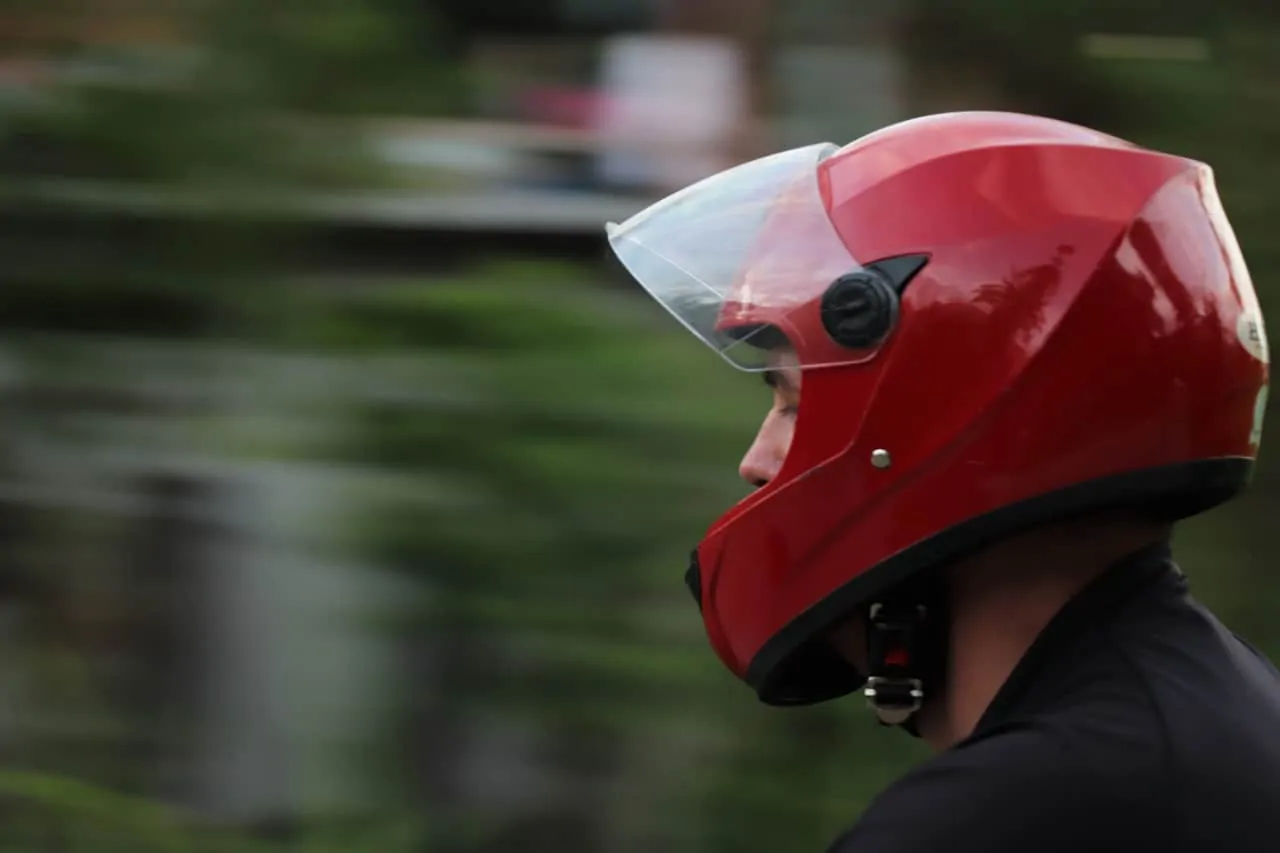The motorcycle helmet strap helps keep the helmet attached to your head at all times. It typically goes under the chin and secures the shell to your skull.
Here is how to strap a motorcycle helmet with a double ring system. Take the right strap and then pull it under your chin and to the left. Loop it through the rings. Then, separate the two rings and then loop the right strap through the first ring. Pull it under your chin and make sure that it is at the correct tightness level. It should neither be too tight nor too loose.
The double ring system is the most complicated strap among helmets. It is deemed to be the most secure and is usually only present among high-end motorcycle helmets.
About The Double Ring System
Before diving into buckling the double ring system, it helps to have a clear picture of what it looks like. The double ring system is made up of two metal rings. The rings are connected to one of the tapes.

As aforementioned, this buckling system is only present among high-end and sporting quality motorcycle helmets. Ordinary helmets have a simpler buckle system that has a higher chance of getting unlocked while driving or upon impact. In conclusion, the double ring system is the safer option. You can change the buckles of your helmet and upgrade it to this.
Importance Of Straps
Some riders underestimate the importance of straps which is why they sometimes don’t bother attaching the buckles whenever they put the helmets on. Straps are important because they keep the helmet safely and securely in place. Without it, the helmet will move around while you are driving and easily turn into a distraction. Your helmet will also easily come off, especially upon impact when you need it the most.
How To Strap
Put the helmet on. Position it correctly and make sure that the visor is properly aligned with your eyes. Pull down the straps from both sides so that they’re exposed.
Pull the right strap to the metal ring to the left strap. Loop it through and then pull tightly under your chin. Pull apart the ring and then loop the strap again through the first ring. Place the strap under the second ring connector. Pull the string back to the right side.
At this point, you can make the necessary adjustments to ensure that the tightness is the perfect fit. Keep it at a comfortable tightness – not too tight nor too loose.

Other Tips
The ring connectors are made of metal. They have a chance to become corroded over time. Make sure to regularly grease them to keep them functional. Keep the ring connectors at the correct position so that they won’t come undone.
This motorcycle strap is so important for all types of helmets, particularly for open-faced helmets. This type of helmet fits loosely because it covers the least amount of area. Most of the time, it only protects the top of the head up to the temples. The straps are essential to keep the helmet on at all times. Make sure to go for the thicker and more durable kind that is made of polyester and hybrid fabric.
How Tight Should The Strap Be?
The helmet strap serves to keep the helmet on your head. It also controls how tight the helmet will rest on your head. Make sure to loop the straps under your chin and not above it. A finger should be able to fit in the space between the strap and your chin. A strap that is too tight will make bowing or turning your head feel uncomfortable. It will also become a distraction while you are driving.
You’ll know that the tightness is enough when the motorcycle helmet already fits snugly. The main test you can do is quickly shaking your head from left to right. The helmet shouldn’t budge. If it moves, you’ll need to readjust the straps or purchase the correct size of helmet.
How To Get The Perfect Helmet Size
The strap only serves to keep the helmet attached to your head. It can only do so much in ensuring that the helmet fits snugly. How it fits will largely depend on whether or not you bought the helmet of the right size.

Get The Proper Shape
Not all riders have the same skull shape. There are three main types of head shape: long oval, intermediate oval, and round oval. You can determine your head shape by asking a friend to take an overhead photo of your head. Make sure to flatten your hair as much as possible and to place the camera directly overhead.
After determining your head shape, you can now shop accordingly. Most US-based manufacturers create intermediate oval-shaped helmets. You can find the other shapes among European brands.
Take the circumference of the thickest part of your skull. This is around your temples and forehead. It’s better to ask a friend to do this for you for a more accurate measurement. Then, take your measurement and purchase the correct size. Refer to the sizing chart below for the corresponding sizes.
Proper Fit
The helmet should fit snugly but not to the point of giving you a migraine. Take the helmet and wear it for fifteen to twenty minutes. If there’s no pain from pressure points, then it fits just right. It’s okay if you feel like it’s a tight fit for as long as there are no headaches developed after fifteen to twenty minutes.
Remember that there is about fifteen to twenty percent of break-in so it will definitely loose up more over time. You can also make adjustments to the internal paddings by replacing them with thinner ones so that you can free up more space.
